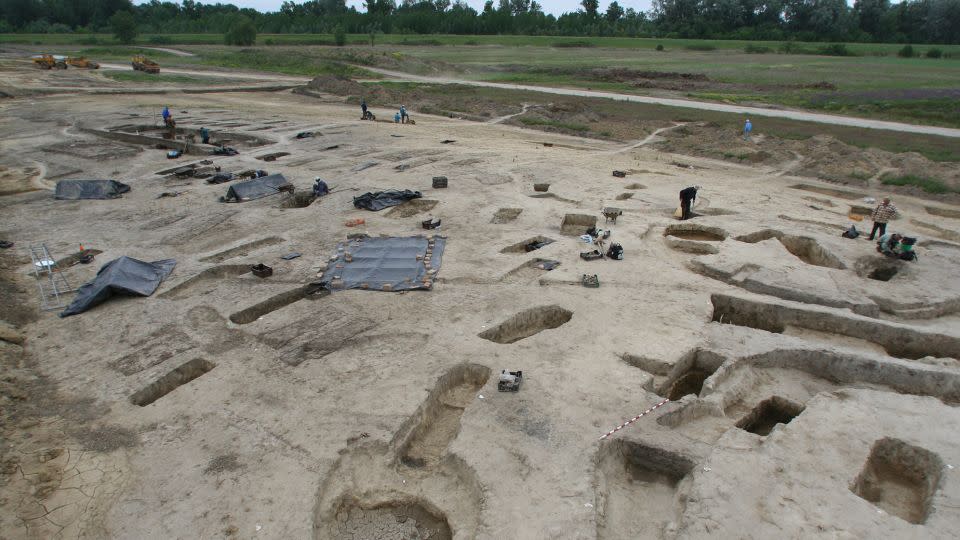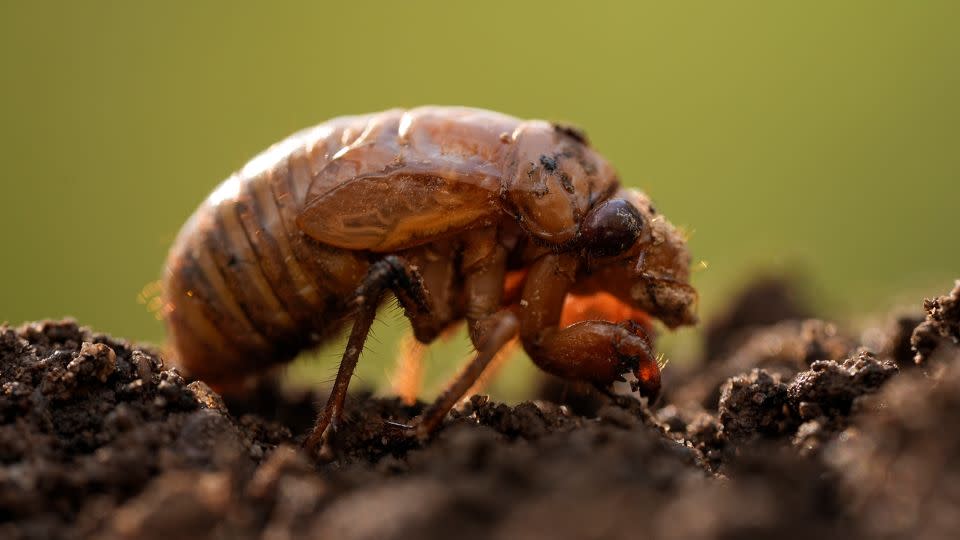Ancient DNA pulls back curtain on mysterious empire
Editor’s note: A version of this story appeared in CNN’s Wonder Theory science newsletter. To get it in your inbox, sign up for free here.
From a speck of bone, scientists can tease out astonishing information about the past.
Analysis of ancient DNA recovered from human remains has illuminated the traits and ancestry of historic individuals — be it a mummified iceman, Chinese emperor or legendary composer.
As techniques improve, researchers are harnessing this invaluable tool to investigate human remains from multiple burial grounds, resulting in the large datasets that help them better understand the dynamics of entire communities.
The outcomes are particularly exciting when applied to shadowy empires of peoples such as the Avars, who didn’t have any written records.
Dig this

Primarily known from the accounts of their Byzantine adversaries, the Avars were formidable horseback warriors who arrived in Central and Eastern Europe in the sixth century seemingly out of nowhere.
The origins of the empire and its people remained obscure until a landmark April 2022 study found they hailed from the Mongolian steppe.
Now, a new analysis of the unearthed remains of 424 individuals from cemeteries in Hungary has provided details about Avar family and social life and how the newcomers interacted with the population of their adopted homeland.
The findings revealed a tightly knit population with marriage practices that aren’t common today.
Across the universe
Humanity’s most distant spacecraft is back in touch with Earth. For the first time in five months, NASA engineers received coherent data from Voyager 1.
It’s currently about 15 billion miles (24 billion kilometers) away, and at 46 years old, the probe has shown multiple quirks and signs of aging in recent years.
The latest issue experienced by Voyager 1 first cropped up in November 2023 when the flight data system’s telemetry modulation unit began sending an indecipherable repeating pattern of code.
The fix was the result of a clever bit of trial and error and the unraveling of a mystery that led the team to a single chip.
Lunar update
The closest flyby of Jupiter’s moon Io in more than 20 years captured high-resolution images that showcased the celestial body’s volcanic plumes, mountain peaks and a glass-smooth lake of cooling lava.
NASA’s Juno spacecraft, which first arrived to study Jupiter and its moons in 2016, flew within roughly 930 miles (1,500 kilometers) of the lava world’s surface in December and February to capture the first detailed images of Io’s northern latitudes.
“Io is simply littered with volcanoes, and we caught a few of them in action,” said Scott Bolton, Juno’s principal investigator at the Southwest Research Institute, in a statement.
Bolton described Io as “Jupiter’s tortured moon” because of the ferocious forces it regularly encounters.
Explorations
On June 8, 1924, a teammate spotted George Mallory and fellow climber Andrew Irvine from a distance as the men were en route to the summit of Mount Everest; no one ever saw them alive again.
Mallory’s words from the mountain, however, are now available to read online in their entirety for the first time. Hundreds of pages of correspondence and other documents written and received by Mallory were recently scanned by Magdalene College, Cambridge, in the United Kingdom, where he studied.
The letters outline Mallory’s meticulous preparations and equipment tests, and his optimism about their prospects. But the letters also show the darker side of mountaineering: bad weather, health issues, setbacks and doubts.
Days before his disappearance, Mallory wrote that the odds were “50 to 1 against us” in the last letter to his wife, Ruth, dated May 27, 1924.
Once upon a planet

Naturalists have spotted the first arrivals in this spring’s historic cicada dual emergence.
The insects will infiltrate a much bigger geographical area than similar occurrences in other years because they are part of the synchronous emergence of two particular periodical cicada broods that haven’t appeared together since 1803.
More than a dozen states in the South and Midwest will experience the glorious and mysterious natural phenomenon when it gets in full swing.
Experts have some tips about what to expect and how to prepare. And, crucially, for those who view cicadas as a noisy, anxiety-inducing nuisance, here are steps to take if you’re not a bug fan.
Discoveries
Check out these mind-expanding stories.
— Boeing and NASA have decided to move forward with a historic crewed launch of a new spacecraft after lengthy delays.
— Surgeons have completed the first transplant to combine a mechanical heart pump and a gene-edited pig kidney.
— Which foods have the most plastic? You may be surprised.
— The Hubble Space Telescope captured an image of a glowing nebula ejected from a dying star that may also show evidence of stellar cannibalism.
Like what you’ve read? Oh, but there’s more. Sign up here to receive in your inbox the next edition of Wonder Theory, brought to you by CNN Space and Science writers Ashley Strickland and Katie Hunt. They find wonder in planets beyond our solar system and discoveries from the ancient world.
For more CNN news and newsletters create an account at CNN.com
